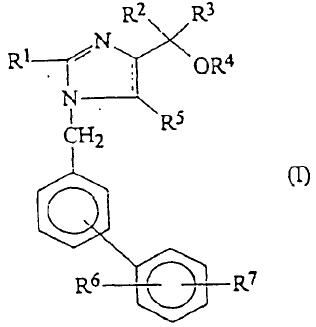As stipulated under Chapter 3, Section 4.6.2 of Part IV of the new Guidelines for Patent Examination implemented on April 1, 2017, "the specific manners of amendment to claims are generally limited to deletion of claims, deletion of technical solutions, further definition of claims, and correction of obvious errors". Also, it is stipulated that "deletion of a technical solution means to remove one or more technical solutions from several parallel technical solutions defined in the same claim", but it does not elaborate further on circumstances under which the above-mentioned provisions fall. This poses problems and controversies to amendments to Markush-type claims in the art of chemistry.
The Markush-type claims defined by the Chinese Patent Law are claims that define a plurality of side-by-side alternative elements in one claim. In the art of chemistry, homologues, homogeneous atoms, isomers, and the like can generally be classified into the same "genus", and compounds having the same "genus" generally have the same/similar chemical properties. For example, replacing Cl in some compound A (R-Cl) with F yields a compound B (R-F). Under most circumstances, the compound A and the compound B have approximate structures and properties. If the inventor discloses the compound A, those skilled in the art would obviously conceive of the compound B, in this case, the inventor is allowed to incorporate the compound B into the protection scope of the claims thereof when applying for patent protection, this is the origin of the Markush-type claims. In short, in the art of chemistry, such a unique drafting manner of the Markush-type claims enables the applicant to summarize a large number of specific compounds having similar structures and properties using a form of chemical formula, so as to obtain a broad scope of protection, which also enables the Markush-type claims to have a decisive position.
However, a highly generalized description and a broad scope of protection also impose greater risks of invalidity for the Markush-type claims. As frequently faced with the challenges of invalidation procedures, there exists a general controversy in the theory and practice of community whether the patentee, in the invalidation procedures, can amend the alternative elements of the Markush-type claims in a deleting manner, where one viewpoint is that the Markush-type claims belong to an overall technical solution and can only be deleted as a whole, and alternative elements cannot be selectively deleted (hereinafter referred to as the viewpoint of "overall technical solution"); and the other viewpoint is that the alternative elements of the Markush-type claims belong to technical solutions in parallel, and thus the deletion manner of the technical solutions is applicable, i.e., one or more can be deleted from two or more alternative elements in parallel in the same claim (hereinafter referred to as the viewpoint of "technical solutions in parallel").
In practice, Patent Reexamination Board and Court of First Instance (including Beijing No. 1 Intermediate People's Court and Beijing Intellectual Property Court, patent reexamination and invalid administrative proceedings are currently changed under the jurisdiction of Beijing Intellectual Property Court) prefer the viewpoint of "overall technical solution", while the Beijing Higher people's Court prefers the viewpoint of "technical solutions in parallel", the adjudication organs have conflict viewpoints and cause an enormous controversy in the entire procedure for announcement of invalidation and subsequent administrative remedies, leading to repeated trial results of a plurality of cases, as a result, litigation burden and costs for the parties are virtually increased.
In December, 2017, the Supreme People's Court finally decided in the retrial case "(2016) Supreme Law Xing Zai No. 41" criteria of amendments to Markush-type claims in invalidation cases, thereby bringing the controversy to an end for over a decade and addressing the major problem that cases are involved in protracted judicial proceedings as judicial organs have inconsistent viewpoints.
It is worth mentioning that the retrial case was reviewed by the Supreme People's Court and after repeated considerations and investigations, it took three years to make the final decision, in which its cautiousness was embodied. Let's discuss such an important historic case.
The (2016) Supreme Law Xing Zai Decision No. 41 refers to a patent for invention entitled "Process for Preparing Pharmaceutical Composition for Treatment or Prevention of Hypertension" filed by Daiichi Sankyo Company, Limited with patent No. 97126347.7. The claims of this patent the grant of which has been announced are provided as follows:
1. A process for preparing a pharmaceutical composition for treatment or prevention of hypertension, comprising: mixing an antihypertensive agent with a pharmaceutically acceptable carrier or diluent, wherein the antihypertensive agent is at least one of a compound of formula (I) or a pharmaceutically used salt or ester thereof,

wherein R1 represents an alkyl group having 1 to 6 carbon atoms; R2 and R3 are the same or different, and each represents an alkyl group having 1 to 6 carbon atoms; R4 represents a hydrogen atom, or an alkyl group having 1 to 6 carbon atoms; R5 represents a carboxyl group, a group of formula COOR5a, or a group of formula -CONR8R9, where R8, R9 are the same or different, and each represents a hydrogen atom; an unsubstituted alkyl group containing 1 to 6 carbon atoms; a substituted alkyl group containing 1 to 6 carbon atoms, where the alkyl group is substituted by a carboxyl group or an alkoxycarbonyl group whose alkyl moiety contains 1 to 6 carbon atoms; or R8 and R9 together represent a substituted alkylene containing 2 to 6 carbon atoms, where the alkylene is substituted by an alkoxycarbonyl group having 1 to 6 carbon atoms in its alkyl moiety; and R5a represents an alkyl group containing 1 to 6 carbon atoms; alkanoyloxyalkyl, wherein the alkanoyl moiety and the alkyl moiety each contains 1 to 6 carbon atoms; an alkoxycarbonyloxyalkyl group in which the alkoxy moiety and the alkyl moiety each contains 1 to 6 carbon atoms; (5-methyl-2-oxo-1,3-dioxole-4-yl)methyl; or 2-benzo[c]furanone; R6 represents a hydrogen atom; and R7 represents carboxyl or tetrazol-5-yl.
In the invalidation procedure, the patentee deleted the wordings "or ester" in the feature "or a pharmaceutically used salt or ester thereof" in claim 1; deleted "an alkyl group having 1 to 6 carbons" under the definition of R4 in claim 1; deleted other technical solutions than "the carboxyl group and the group of formula COOR5a (where R5a is (5-methyl-2-oxo-1,3-dioxole-4-yl)methyl)" under the definition of R5 in claim 1.
The Reexamination Board accepted the amendment that the wordings "or ester" in claim 1 were deleted, but believed that the rest of the amendments did not conform to the relevant provisions of Article 68 of the Implementing Regulations of the Chinese Patent Law, and therefore the amended text cannot be accepted. In the end, the patentee made it clear that the wordings "ester thereof" were only deleted in claim 1, and the Reexamination Board made the Invalidation Decision based on the text.
The Court of First Instance (Beijing No. 1 Intermediate People's Court) supported the above-mentioned criteria of amendments and held that the deletion of the Markush-type elements in the Markush-type claims by Daiichi Sankyo Company, Limited was not directly equivalent to the deletion of the parallel technical solutions, and therefore the amendments did not conform to the provisions of Rule 68 of the Implementing Regulations of the Chinese Patent Law.
The Court of Second Instance (Beijing Higher People's Court) objected to the criteria of amendments and held that the Markush-type claims were claims that define a plurality of side-by-side alternative elements in one claim. Thus, when the Markush-type claims relate to compounds, these compounds are embodied in a side-by-side selection relationship, and each compound is embodied as an independent technical solution. Since the Markush-type claims are considered to belong to a particular type of parallel technical solutions, and deleting one or more variables narrows the protection scope of a patent right without harming the public interest, the patentee should be allowed to delete the relevant options. However, since the compounds covered by the Markush-type claims are not all synthesized when the claims are granted, the limit of allowable amendments lies in that the amended claims should not comprise specific compounds not specified in the Description, otherwise, the invention in which the Markush-type claims are selected loses the foundation of existence.
In this regard, the (2016) Supreme Law Xing Zai No. 41 Decision pointed out: "in view of special nature of chemical invention - creations and in consideration of at the beginning of drafting of the Markush-type claims, the applicant for the patent had an opportunity to draft all structure modes into one claim as much as possible, in order to obtain a maximum protection scope of rights, and therefore, strict restrictions must be imposed on amendments to the Markush-type claims in the invalidation phase. The principle that the amendments to the Markush-type claims are allowed should be that a type of compound or a single compound having new properties and functions cannot be generated due to the amendments, however, individual factors should be fully considered as well.
If the applicant for the patent or the patentee is allowed to delete any of the options of any variable, even if the deletion narrows down the protection scope of the claims, it does not harm the public's rights and interests, but there exists uncertainty as to whether the new protection scope of rights will be created accordingly, it not only fails to give the public a stable expectation, but also goes against maintenance of stability of system for determination of patent rights".
Through the above-mentioned verdict of the Supreme People's Court, it was clarified that one or more variables in the Markush-type claims were usually not allowed to be deleted in the invalidation procedure. Naturally, discussions and controversies in the theoretical level will not disappear with the judicial decisions, but the judgment has important significance for the unified judicial trial standards, and brings about the applicant/patentee a more unified expectation of consequences of legal actions.
In addition, stricter requirements for drafting of the Markush-type claims will be imposed by the principle that no amendment is allowed in the invalidation procedure. Since the Markush-type claims are prevalent in the chemical field, especially in the medical field, it should be fully taken into account by patent agents.
Drafting a proposal by a patent agent
When focusing on drafting of Markush-type claims, a patent agent is supposed to pay attention to:
1. make full use of dependent claims, and draft multiple levels of protection scope. In the invalidation procedure, if independent claims cannot be amended, the dependent claims can be utilized to construct multiple defensive lines; and
2. draft the specific compounds disclosed in the Description as dependent claims. In this way, the specific compounds can still be protected even if the Markush-type claims are invalid as it cannot be amended. If possible, the Description should disclose the specific compounds and experimental data thereof as many as possible, so that a broader scope of protection can be supported, and next, hide the specific compounds the applicant actually desires to protect.
The content of this article is intended to provide a general guide to the subject matter. Specialist advice should be sought about your specific circumstances.

